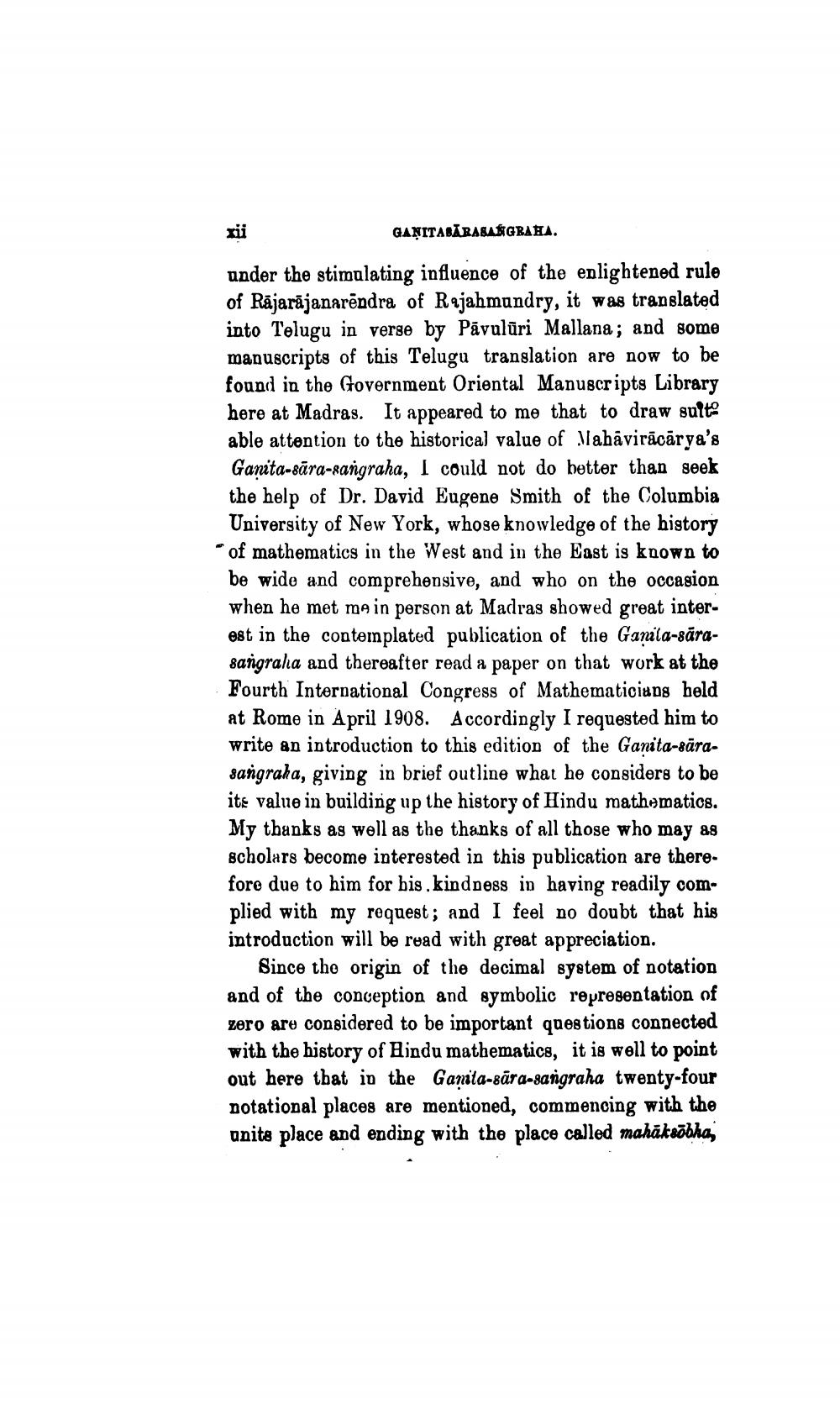________________
GANITARĂRABAKGRAHA.
ander the stimulating influence of the enlightened rule of Rājarājanarēndra of Rajahmundry, it was translated into Telugu in verse by Pāvulāri Mallana; and some manuscripts of this Telugu translation are now to be found in the Government Oriental Manuscripts Library here at Madras. It appeared to me that to draw suita able attention to the historical value of Mahāvirācārya's Ganita-sāra-sangraha, I could not do better than seek the help of Dr. David Eugene Smith of the Columbia University of New York, whose knowledge of the history of mathematics in the West and in the East is known to be wide and comprehensive, and who on the occasion when he met me in person at Madras showed great interest in the contemplated publication of the Ganila-sārasangraha and thereafter read a paper on that work at the Fourth International Congress of Mathematicians held at Rome in April 1908. Accordingly I requested him to write an introduction to this edition of the Ganita-särasangraha, giving in brief outline what he considers to be its value in building up the history of Hindu mathematics. My thanks as well as the thanks of all those who may as scholars become interested in this publication are therefore due to him for bis, kindness in having readily complied with my request; and I feel no doubt that his introduction will be road with great appreciation.
Since the origin of the decimal system of notation and of the conception and symbolic representation of zero are considered to be important questions connected with the history of Hindu mathematics, it is well to point out here that in the Ganita-bāra-sangraha twenty-four notational places are mentioned, commencing with the units place and ending with the place called mahāksõbhain




